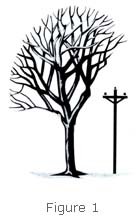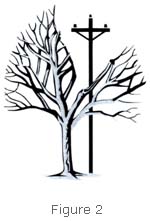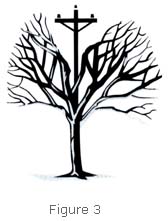Pruning Near Distribution Lines
Preventing Outages One Branch at a Time
Many communities in New Jersey have lower-voltage utility wires called distribution lines. Unlike high-voltage transmission lines, which are usually connected to large metal towers, distribution lines can be found on utility poles located alongside roadways or in easements along property lines.
Trees that are close to power lines must be cut back to ensure they don't cause power outages. PSE&G vegetation management works on a four-year maintenance cycle, during which time trees are pruned, or removed, in order to maintain an adequate distance from power lines and to allow for regrowth until the next cycle.
Healthy Pruning Techniques
To ensure the maximum health and beauty of New Jersey's trees, we have certified arborists and licensed tree experts on staff overseeing all tree trimming work.
There are many factors that determine how we cut trees, including:
- The species of the tree
- Its characteristic shape and growth habit
- The voltage of nearby conductors, and
- The type of construction in the vicinity.
In order to prevent outages, our contractors use directional pruning to train tree branches to grow away from power lines and equipment. Directional pruning, which is recognized as a good practice by national tree authorities, allows for proper sealing of pruning cuts without depleting the tree's natural nutritional reserves.
After trimming, trees may look similar to the images below. However, this is only a representation of how the majority of trees are trimmed. Final decisions on pruning cuts are made based on many factors including the tree species, its characteristic shape and growth habit, voltage of the conductors, and the type of nearby equipment.
 |
 |
 |
Important Safety Tips to Remember
- Never attempt to trim or remove any tree next to a power line.
- Never build tree houses in trees near power lines.
- Never climb trees near power lines.
- State and federal laws prohibit any person from working within 10 feet of any electric power facility without proper training and certification. If you feel a tree needs to be trimmed, please contact us.
Vegetation Management Near You
Check out the vegetation management schedule, which offers an overview of when PSE&G and our contractors work in neighborhoods. In general you’ll also receive notice, such as a door hanger, when these crews are working nearby. Please note that most tree trimming is planned, proactive work that ensures the reliability of our system and is done with care to avoid harm to trees. It is possible you may see work that hasn't been announced. This is due to an imminent issue, such as a storm, and it is not considered planned maintenance.





















